Contents
Deer whip (Pluteus cervinus)
- Division: Basidiomycota (Basidiomycetes)
- Subdivision: Agaricomycotina (Agaricomycetes)
- Class: Agaricomycetes (Agaricomycetes)
- Subclass: Agaricomycetidae (Agaricomycetes)
- Order: Agaricales (Agaric or Lamellar)
- Family: Pluteaceae (Pluteaceae)
- Genus: Pluteus (Pluteus)
- Type: Pluteus cervinus (Deer Pluteus)
- Deer mushroom
- Plyutey brown
- Plutey dark fibrous
- Agaricus pluteus
- Hyporrhodius stag
- Pluteus deer f. deer
- Hyporrhodius cervinus var. cervinus
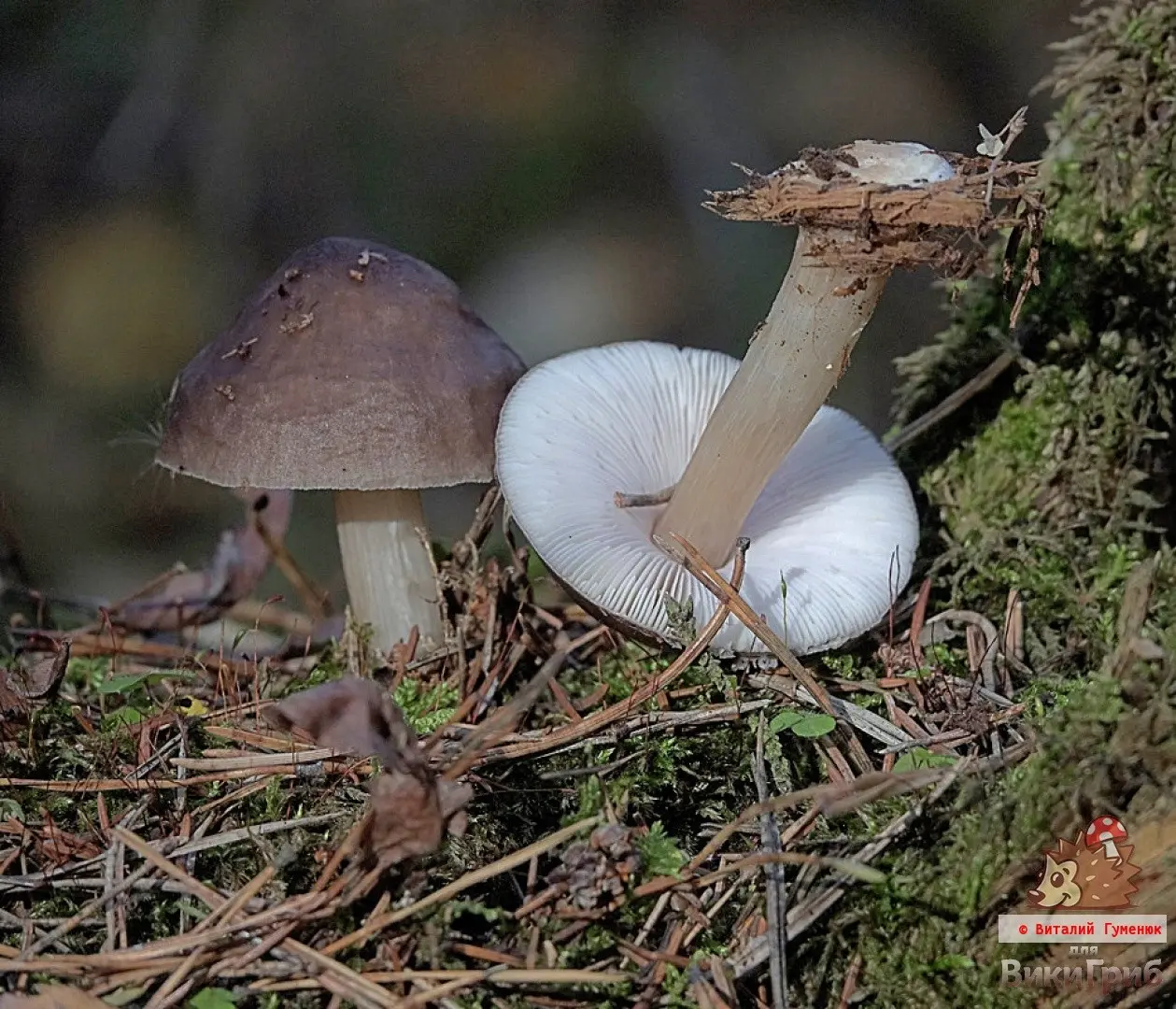
Current name: Pluteus cervinus (Schaeff.) P. Kumm., Der Führer in die Pilzkunde: 99 (1871)
The deer whip is widely distributed and common throughout most of Eurasia and North America, especially in temperate regions. This fungus usually grows on hardwoods, but it is not very picky about what kind of wood it grows on, nor is it very picky about when it will bear fruit, appearing from spring to autumn and even winter in warmer climates.
The hat can be of different colors, but shades of brown usually predominate. The loose plates are white at first, but quickly acquire a pink tint.
A recent study (Justo et al., 2014) using DNA data indicates that there are several “enigmatic” species traditionally identified as Pluteus cervinus. Justo et al caution that morphological features cannot always be relied upon to separate these species, often requiring microscopy for precise identification.
head: 4,5-10 cm, sometimes up to 12 and even up to 15 cm in diameter are indicated. At first rounded, convex, bell-shaped.
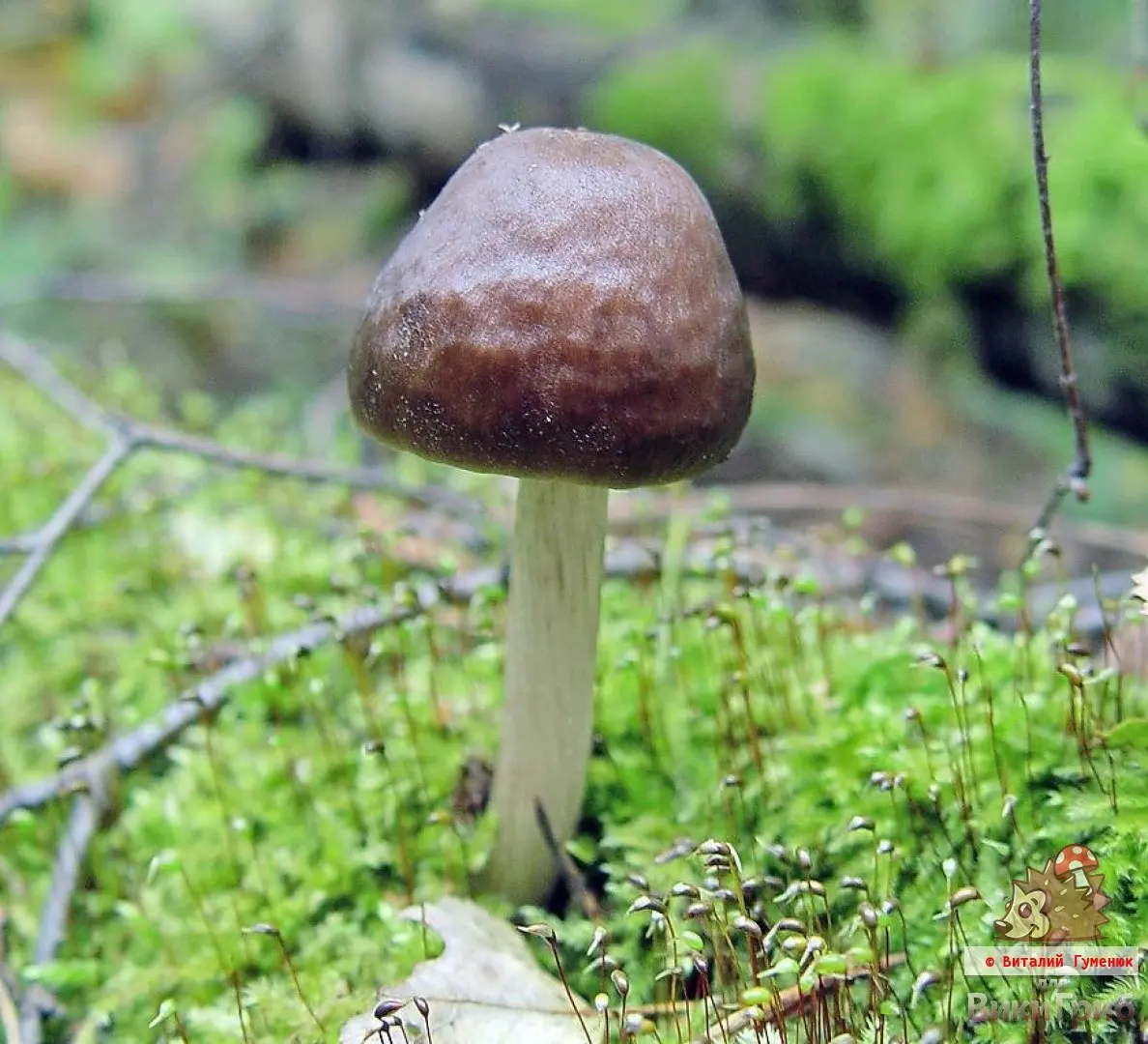
It then becomes broadly convex or nearly flat, often with a broad central tubercle.
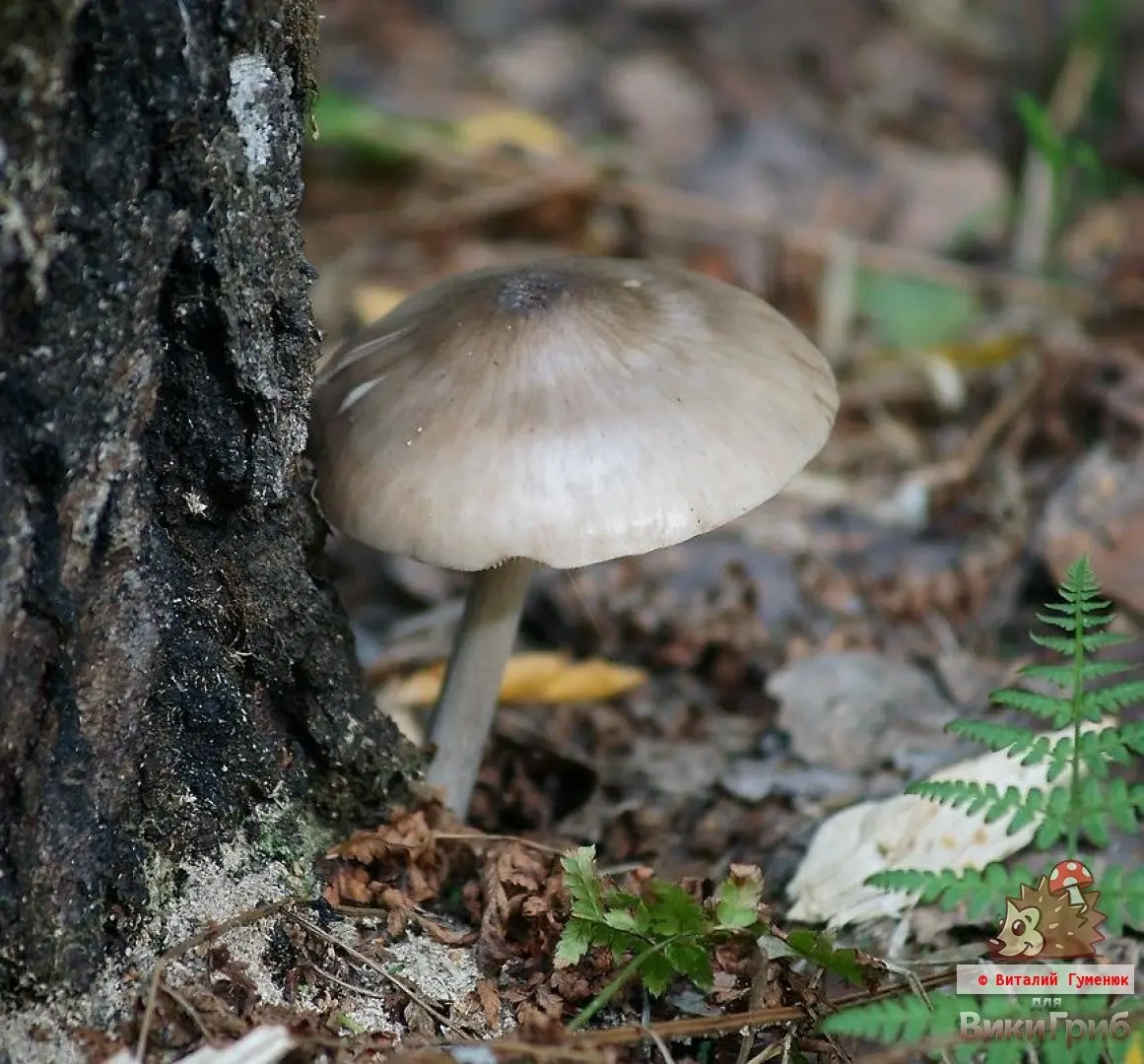
With age – almost flat:

The skin on the cap of young mushrooms is sticky, but soon dries out, and can be slightly sticky when wet. Shiny, smooth, completely bald or finely scaly/fibrillar in the center, often with radial streaks.
Sometimes, depending on weather conditions, the surface of the cap is not smooth, but “wrinkled”, bumpy.
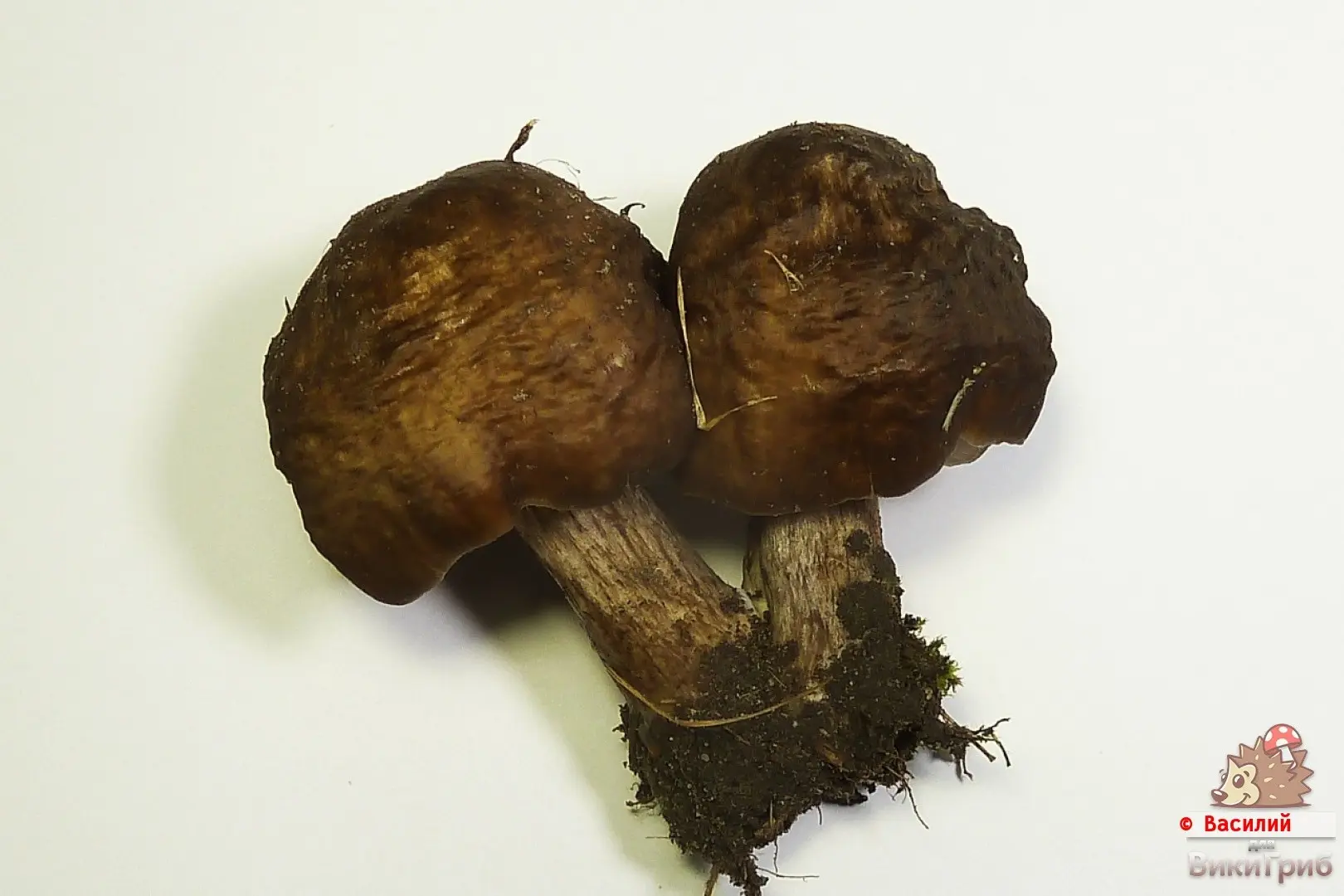
The cap color is dark to pale brown: brown, grayish brown, chestnut brown, often with a hint of olive or gray or (rarely) almost whitish, with a darker, brown or brownish center and a light edge.
The cap margin is usually not ribbed, but may occasionally be ribbed or cracked in older specimens.
plates: Loose, wide, frequent, with numerous plates. Young plutees have white:
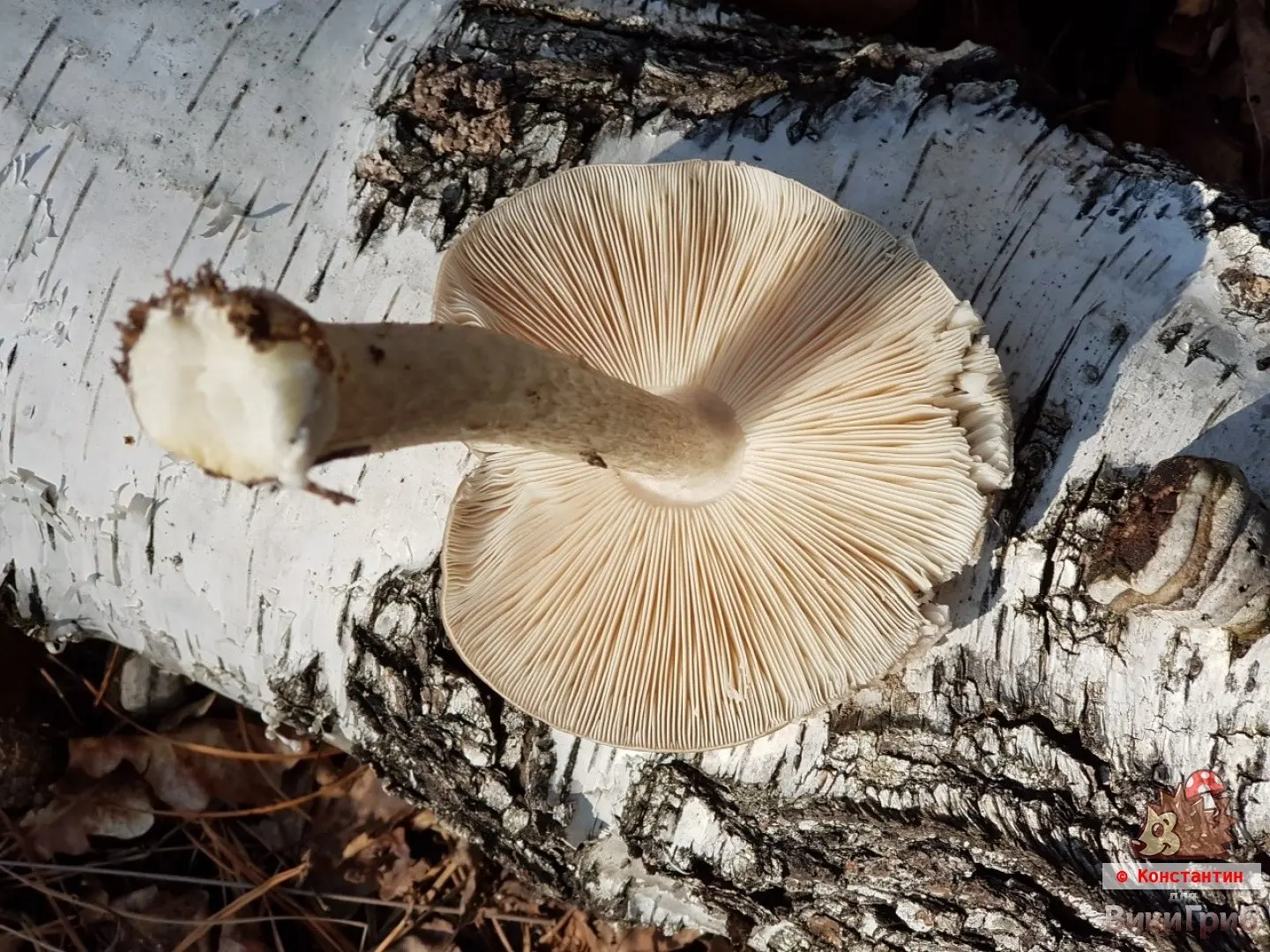
Then they become pinkish, grey-pink, pink and eventually acquires a rich flesh color, often with darker, almost red spots.
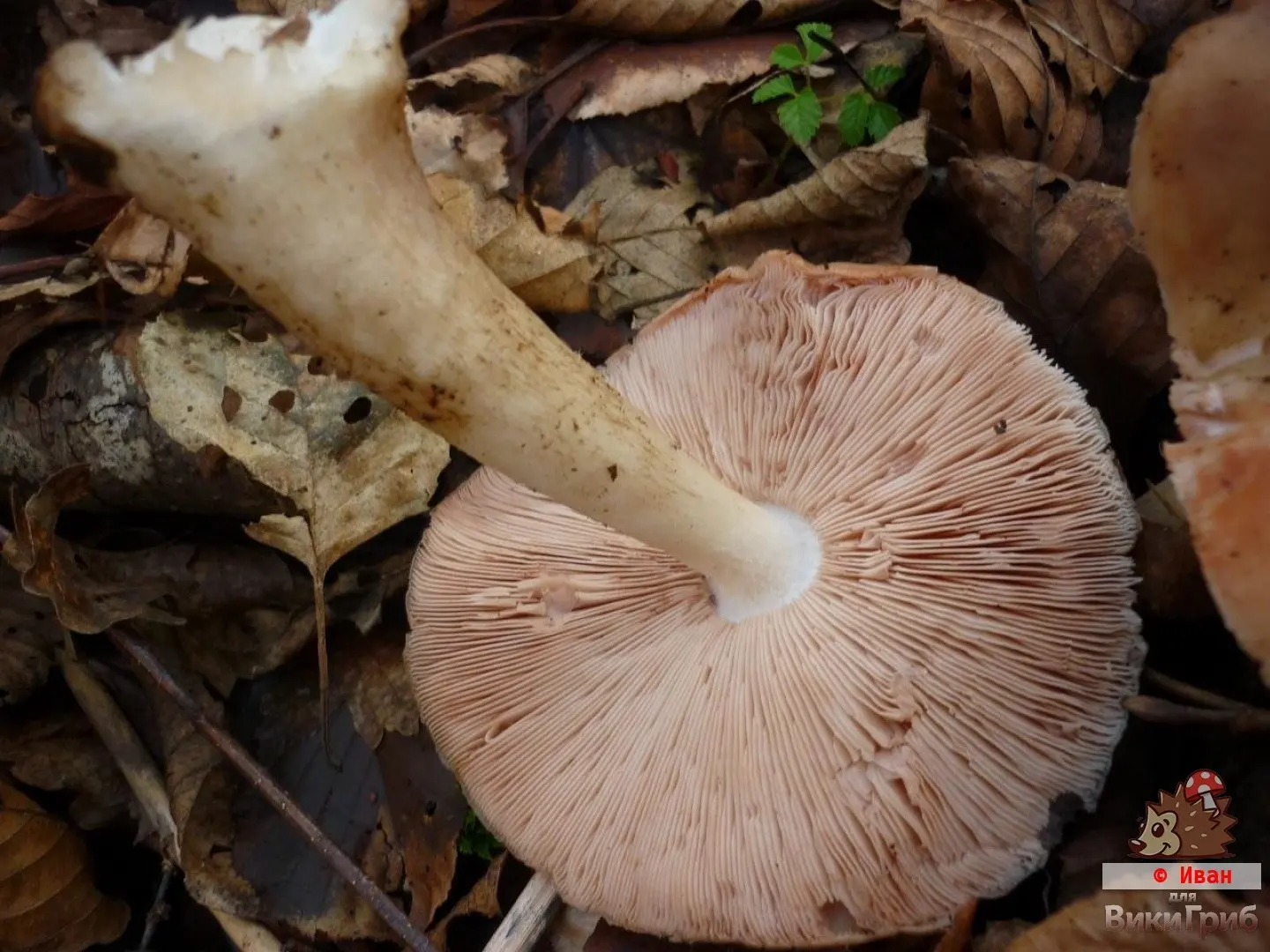
Leg: 5-13 cm long and 5-15 mm thick. More or less straight, may be slightly curved at the base, cylindrical, flat or with a slightly thickened base. Dry, smooth, bald or more often finely scaly with brownish scales. At the base of the stalks, the scales are whitish, and the white basal mycelium is often visible. Whole, the pulp in the center of the leg is a little wadded.

Pulp: soft, white, does not change color on the cut and crumpled places.
Smell faint, almost indistinguishable, described as a smell of dampness or damp wood, “a little like rare”, rarely as “faint mushroom”.
Taste usually somewhat similar to rare.
Chemical reactions: KOH negative to very pale orange on the cap surface.
Spore powder imprint: brownish pink.
Microscopic characteristics:
Spores 6-8 x 4,5-6 µm, ellipsoid, smooth, smooth. Hyaline to slightly ocher in KOH
Plyutey deer grows from spring to late autumn on wood of different types, singly, in groups or in small clusters.
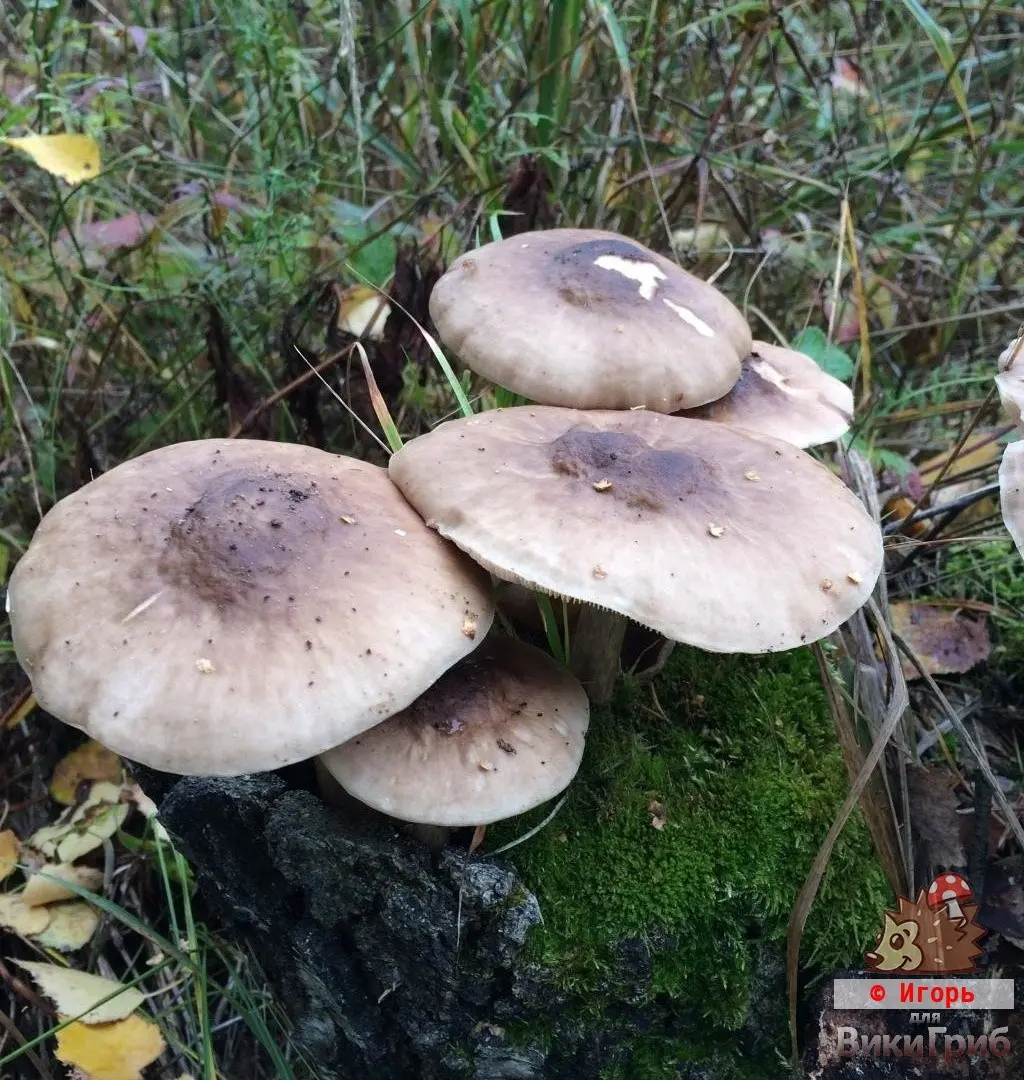
Prefers deciduous, but can also grow in coniferous forests. Grows on dead and buried wood, on stumps and near them, can also grow at the base of living trees.
Different sources indicate so different information that one can only be surprised: from inedible to edible, with the recommendation to boil without fail, for at least 20 minutes.
According to the experience of the author of this note, the mushroom is quite edible. If there is a strong rare smell, mushrooms can be boiled for 5 minutes, drained and cooked in any way: fry, stew, salt or marinate. Rare taste and smell completely disappear.
But the taste of deer whips, let’s say, no. The pulp is soft, besides it is strongly boiled down.
The genus of whips has more than 140 species, some of which are difficult to distinguish from each other.
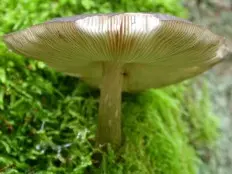
Plyuteus atromarginatus (Pluteus atromarginatus)
This is a rarer species, which is distinguished by a blackish hat and darkly colored edges of the plates. It grows on semi-decayed coniferous trees, bears fruit from the second half of summer.
Pluteus pouzarianus Singer. It is distinguished by the presence of buckles on hyphae, which is distinguishable only under a microscope. It develops on trees of soft (coniferous) species, devoid of a distinct smell.
Plyutey – Reindeer (Pluteus rangifer). It grows in boreal (northern, taiga) and transitional forests north of the 45th parallel.
Similar members of the related genus Volvariella distinguished by the presence of Volvo.
Similar members of the genus entolome have adherent plates instead of free ones. Grow on soil.
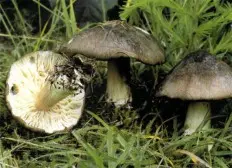
Collybia platyphylla (Megacollybia platyphylla)
Kollybia, according to various sources, an inedible or conditionally edible mushroom, is distinguished by rare, whitish or cream-colored adherent plates and characteristic strands at the base of the stem.









